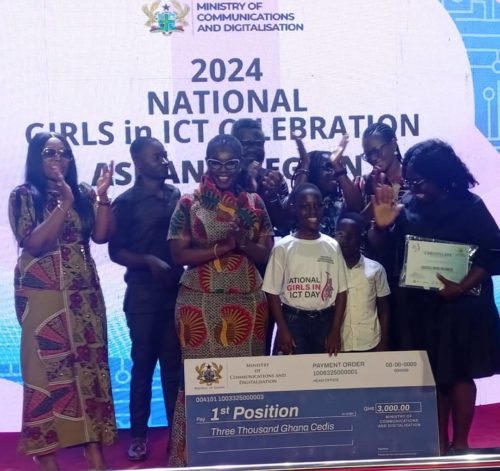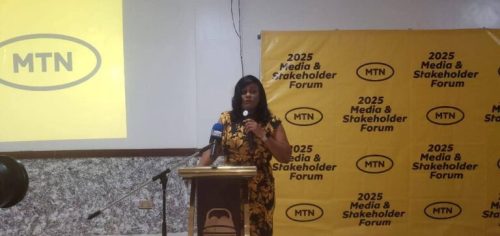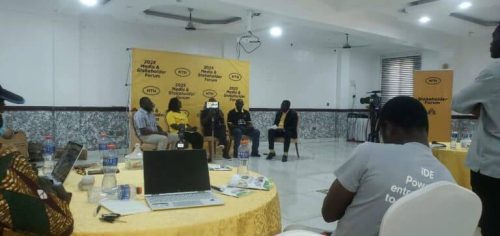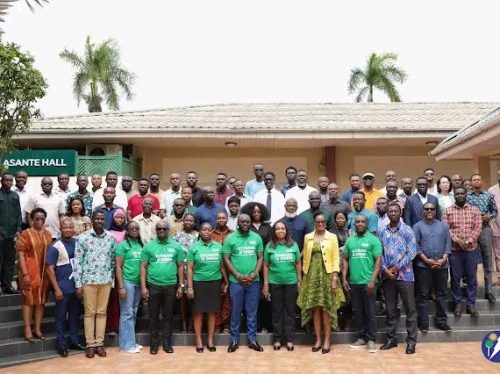

Success Joycelyn Dadzie, a 10-year old basic 6 pupil of Hwidiem M/A Basic School, Asante Akyem North District has emerged winner of the 2024 edition of the MTN Ghana sponsored Girls in ICT program.


She topped the competition of 1,000 girls, earning her the first place, a cash price of GHs 3,000, a plaque, a laptop and a certificate.


Michelle Boakyewaa Boakye, 12-year old JHS 2 student of Atwima Kwanwoma district also came 2nd, taking home a cash price of GHs 2,500, a lap top, plaque and a certificate.

Amponsah Yaa Darkowaah, a 13-year old JHS 2 student of the Ejisu Municipality also occupied the 3rd position. She also received a cash price of GHs 2000, a laptop, a plaque and a certificate.
Presentation of the awards happened on Tuesday, 19th November, 2024 at the Business School of the Kwame Nkrumah University of Science and Technology (KNUST) to climax the 2024 National Girls in ICT celebration in Ashanti region.

Other participating students and teachers who showcased exceptional performance during the training were also given certificates and special awards from Mrs. Ursula Owusu-Ekuful, Minister for Communications and Digitalisation.
In her remarks at the occasion after receiving the award, Success Joycelyn Dadzie said she was extremely excited when her ICT teacher asked her mother permission to add her name to the list of girls selected for the program.
She narrated that when she began the training, “I decided to pay close attention to whatever was taught during the training!
I kid you not, I was focused. Not even the presence of older girls deterred me.
Although I felt I would be the first after the inter-district exam, my little self was dreaming of just my district!
Ha, God had a bigger surprise for me because I prayed after the exam!”.
Success Joycelyn Dadzie thanked the Minister for Communication and Digitalization for the initiative.
At the event, the sector Minister, Mrs. Ursula Owusu-Ekuful, highlighted the “Girls in ICT Trust” initiative.
She emphasized that its goal is empowering young women and girls in the field of information and communication technology (ICT).
Mrs. Owusu-Ekuful noted that the initiative is part of Ghana’s broader strategy to promote gender equality and increase women’s participation in technology sectors.
She explained that the Girls in ICT program aims to bridge the gender gap in the tech industry by providing resources, training, and support, thus fostering digital literacy and creating career opportunities for girls in ICT.
SUPPORT FROM MTN GHANA
Technology giant, MTN Ghana is a key partner vis-a-vis the implementation of the Girls in ICT program by the Ministry of Communication and Digitalization.
Since 2021 up to date , MTN Ghana has supported the initiative with GHs 15.6 million for the girls in ICT program which has sought to train over 10,000 girls in basic ICT programs.
Out of that, 1,000 teachers have also been trained in various ICT fields.
REMARKS FROM MTN
Sophia Tandoh (official at Corporate Services Division- MTN Ghana) remarked that the initiative has been impactful since it is exposing Ghanaian girls to the ICT sector.
“It’s very impactful because at this young age they are exposed to all these ICT fields to even ignite their interest in ICT”.
She said MTN Ghana is happy to associate itself with the initiative and will continue to support the ministry.
ABOUT Girls In ICT Program
Girls in ICT is a program that aims to inspire girls and young women to pursue careers in science, technology, engineering, and mathematics (STEM) and to engage in the digital sector.
International Girls in ICT day is celebrated annually.
The day’s goal is to encourage girls to pursue STEM education and careers, and to expose them to the benefits of ICT.
Girls-In-ICT in Ghana
This program is based on the ITU’s Resolution 70, which was established in 2012.
The program’s objectives include:
1. Supporting the education of girls and women in ICT
2. Arousing interest in STEM studies
3. Exposing girls to opportunities in the ICT sector
4. Bridging the gender digital gap

Enock Akonnor is an experienced Ghanaian journalist, based in Kumasi and currently serves as the CEO and Managing Editor of www.leakyghana.com.
With a wealth of expertise built over many years in the media industry, he has earned a solid reputation as one of Ghana’s most sought-after journalists.
Contact:
📞 +233 541 921 562
✉️ enockakonnor2013@gmail.com








